Risk Adjustment Reimagined: Using AI to Power Accurate, Compliant, and Equitable Care

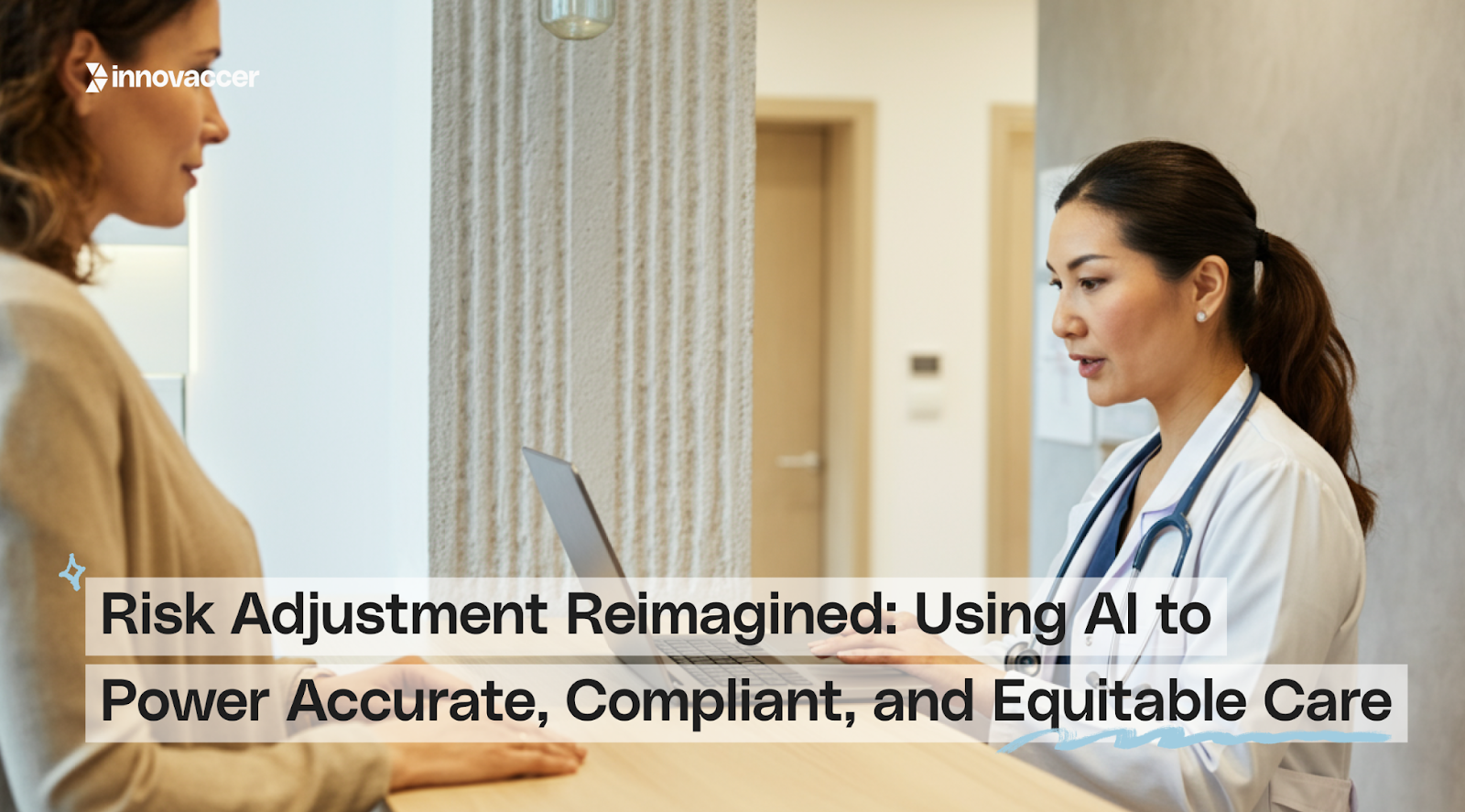
Risk adjustment is fundamental in VBC to ensure fair reimbursement and equitable care. Yet, health plans struggle with traditional methods, relying on retrospective chart reviews, manual coding, and fragmented data sources. Critical insights hidden in unstructured clinical data often lead to missed gap closures, affecting patient outcomes.
Artificial intelligence offers a solution, not to replace clinical judgment, but to assist and streamline the process. A recent webinar with leading experts highlighted how AI, when embedded in workflows, can actually help payers improve risk capture in a compliant way.
Drawing on those expert insights, this blog explores actionable strategies and real-world success stories on leveraging AI to transform risk adjustment.
The Human-AI Partnership: Why Clinicians Are Essential
One of the biggest misconceptions when it comes to employing AI in risk adjustment is that it’s designed to replace clinical expertise. But, this couldn’t be farther from the truth. The successful use of AI in risk adjustment requires clinical judgment.

Transparency is key. When AI flags a potential diagnosis or suggests an HCC code, clinicians need to understand the reasoning behind it. This fosters trust and nurtures a partnership where AI provides evidence and humans give clinical context. For example, if AI flags lab values like A1C, it's up to the clinician to determine whether it supports a diabetes diagnosis or relates to another condition.

This human-AI collaboration creates three critical benefits:
- Diagnostic accuracy improves because clinicians understand how AI reaches its conclusions
- Transparency increases through clear evidence trails showing supporting documentation
- Adoption grows as professionals see AI as a powerful assistant rather than a replacement threat
Maintaining Compliance in an AI-Driven World
As healthcare organizations embrace AI for risk adjustment, compliance will become more complex and not simpler.
Leading organizations are ensuring accuracy and compliance in the following ways:
- Employing a clinical gatekeeper approach: Many organizations now embed clinical experts to review AI-suggested codes, creating mandatory checkpoints to ensure clinical and coding accuracy.
- Understanding AI data sources: Organizations must understand where their AI sources data for HCC coding. Pulling from irrelevant areas like social or family history can lead to unsupported submissions. Clear visibility is essential for audit readiness and compliance.
- Adopting a feedback loop that learns: Organizations must run continuous audit cycles and compare AI recommendations against final submissions to ensure alignment with CMS guidelines. This helps in building a system that will get smarter with time, improving AI accuracy and human coding skills.

Addressing the Bias Challenge
Training AI on biased healthcare data risks perpetuating inequities in risk adjustment. Organizations need diverse training data to avoid these pitfalls. For instance, if we train AI on the data from a hospital that serves the sickest population in Northeast Ohio, the model might suggest too many HCC codes when used elsewhere, or completely miss health conditions that rural doctors document differently. Similarly, Medicare Advantage and Medicaid populations require different approaches due to varying documentation practices.
Real-World Success Stories
Health plans across the country are already implementing AI and seeing measurable results. UST Health Proof has completely changed its chart review process by implementing AI to handle diverse medical records from handwritten charts to complex 10,000-page EMR documents. Their strategic approach has improved productivity while maintaining 95% inter-rater reliability scores. By ensuring that no AI recommendations flow directly to submissions without a human coder review, they’ve successfully balanced efficiency gains with compliance mandates.
Similarly, Longevity Health Plan has adopted a transparency-first approach to educate its clinicians. They ensure clinicians understand where the data is coming from, what’s being shared, and how algorithms work. By doing so, they are presenting “AI as a choice” rather than a mandate for improving clinical documentation.
The Future of AI-Enhanced Risk Adjustment: A Strategic Advantage
Looking ahead, the organizations that will achieve the greatest success in risk adjustment are those that will see AI as not a replacement for human judgment but as a powerful multiplier of human capabilities. However, organizations must keep in mind the following to ensure success:
- Help staff understand AI’s capabilities and how it enhances their professional capabilities instead of replacing them.
- Ensure AI can adapt quickly to regulatory changes and organizational needs.
- Implement robust governance frameworks to validate all AI recommendations clinically and through coding before submission.
- Build feedback loops that improve AI performance and human expertise over time.
When implemented carefully, AI becomes more than just a technology, it becomes a strategic advantage that leads to better patient care and sustainable reimbursement in a complex healthcare landscape.
Note: The insights and expert perspectives in this blog are drawn from our recent webinar 'AI in Risk Adjustment – Maximizing Accuracy & Compliance,' held on May 6, 2025 at 11:00 AM PST, featuring Sri Bharadwaj from Longevity Health Plan, Kristi Reyes from UST Health Proof, Dr. Anil Jain from Innovaccer, and Michelle Zilisch, Senior Director - Product, Innovaccer.

.png)




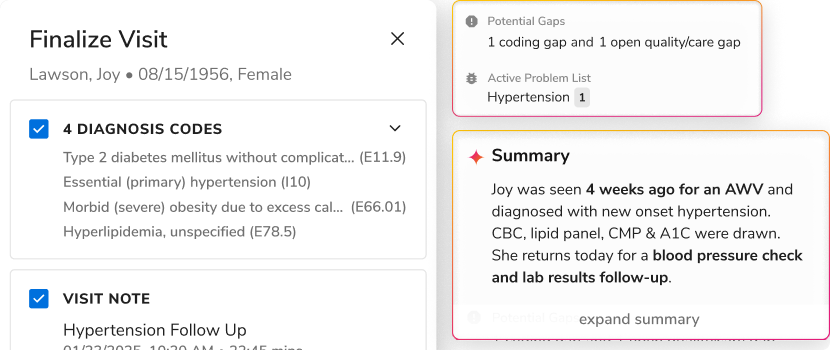
.png)

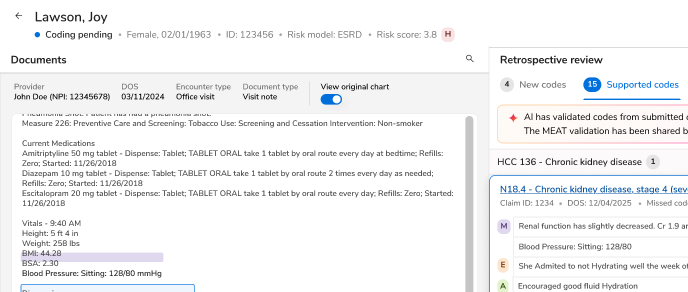
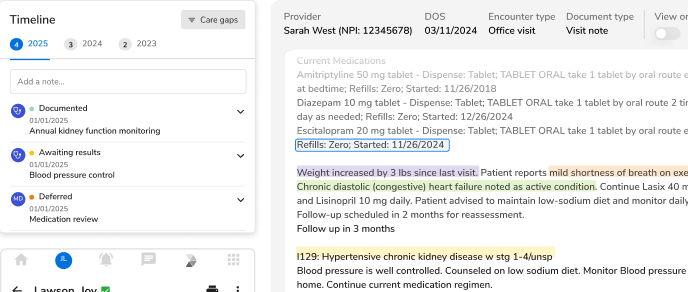
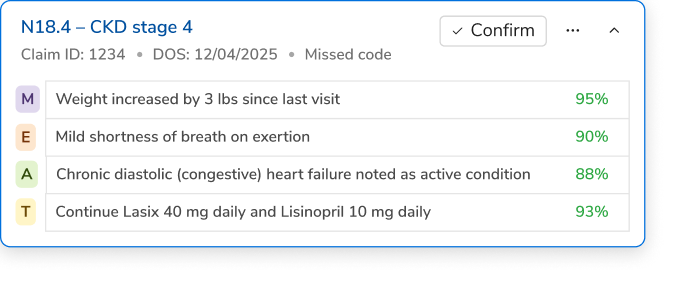





.svg)
.svg)

.svg)

